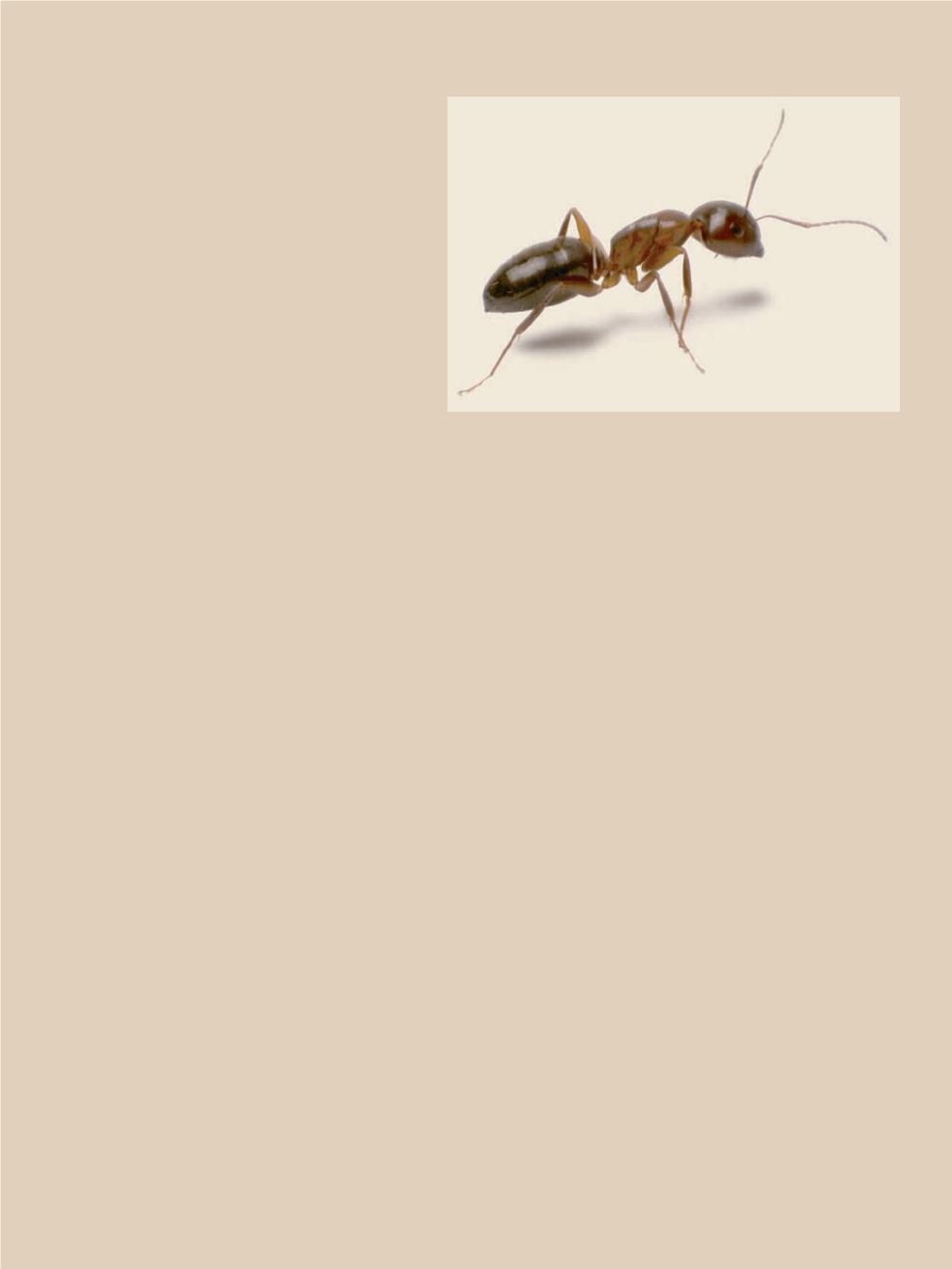
Think that’s weird?
Well, ant researchers have
determined that the Large
Supercolony is part of an
even larger megacolony that
also includes ants on the
other side of the Atlantic and
Pacific Oceans. If you were
to drop ants from the Large
Supercolony in California into
a nest of Argentine ants in
Japan or into a nest along the
coast of the Mediterranean
Sea in Europe, the residents of
those colonies would not attack
the newcomers as strangers.
All ants use chemical communication—smell—to tell friend from foe. As
long as the new ants smell right, the others accept them as colony mates.
Moffett says that “the [Argentine] ants’ aggressive response to each other’s
body smell acts like an immune system—killing all outsiders . . . no matter
how big the colony grows.”
Ants communicate through scented chemicals called
pheromones. Ants use the tips of their antennae to smell
the pheromones, of which there are about ten to twenty
types that all ants in the colony recognize. Chemically
communicated messages tell the other ants many things,
including where food is or that it’s time to attack prey or
to defend the colony.
In an ant subdivision outside San Diego, California, however, it’s all-out
war. Here is where the border of the Large Supercolony meets the borders
of three other ant supercolonies. Melissa Thomas, an evolutionary biologist
and ant researcher at the University of Western Australia, has estimated
that as many as fifteen million ants die in skirmishes along this border in a
six-month period.
How do such megacolonies form, and what makes them work? To
understand the Argentine ant, you must first understand the sugar ant back
home in Argentina.
a.k.a. t
he
s
ugar
a
nt
Home is the flood plain of the Paraná River, which flows through
woodlands in Brazil, Paraguay, and Argentina. In this region of South
46
S
MART
AND
S
PINELESS


